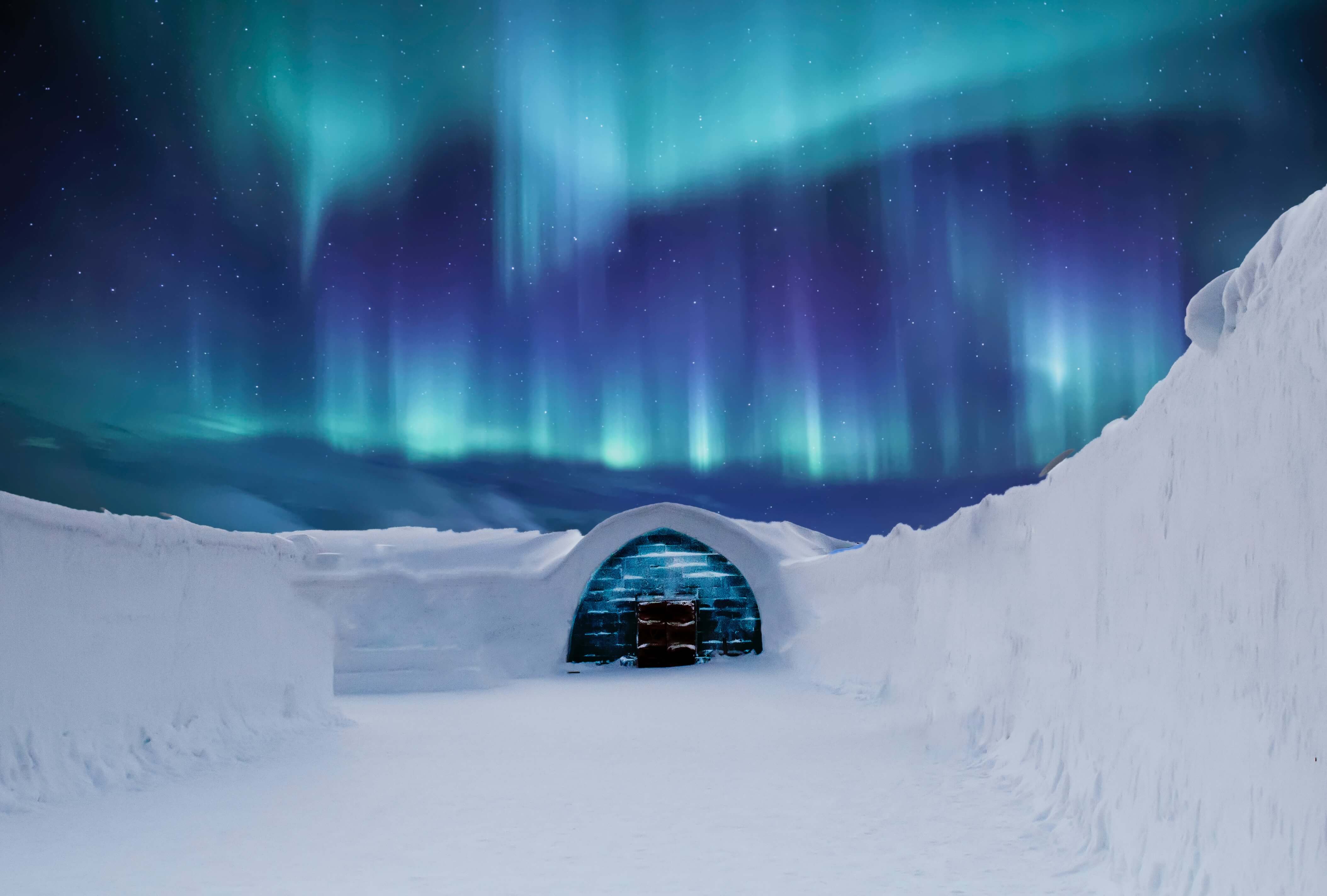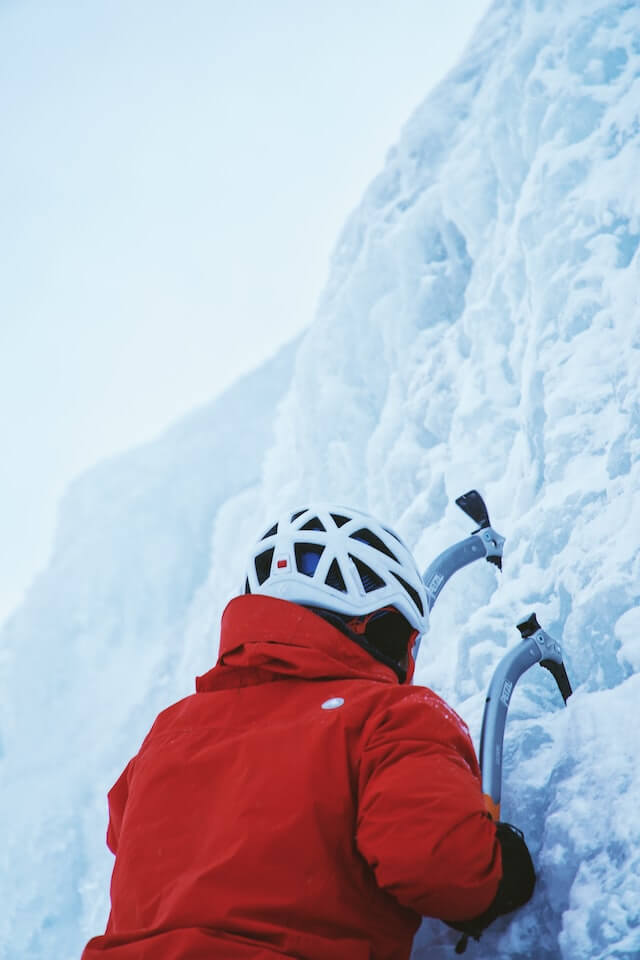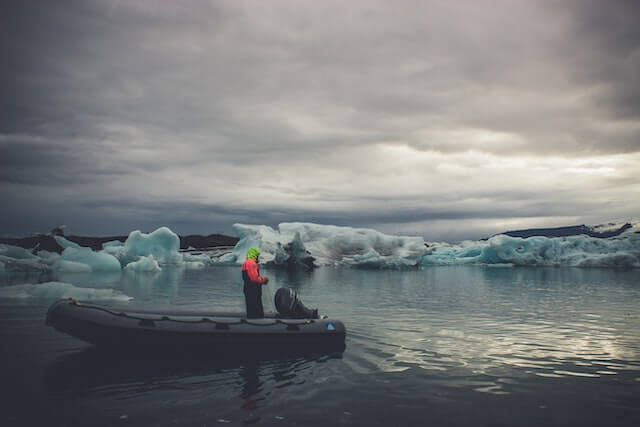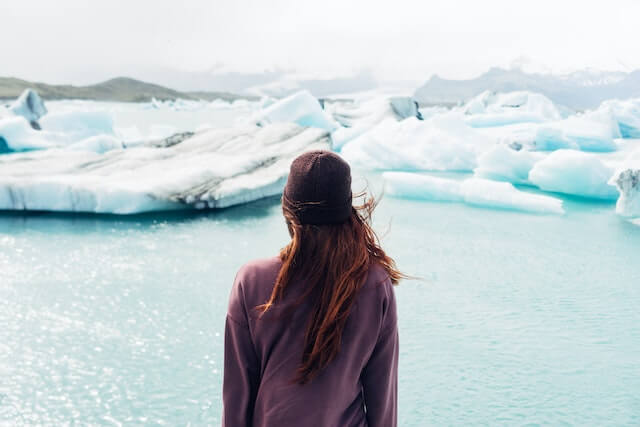Journey to the End of the World More than Aurora Borealis in Alaska

Alaska is the northernmost and largest but least populated state in the U.S. It is covered with snow and ice all year round, and the only thing left in winter is the cold except for the Aurora Borealis. In the summer, there are no auroras to see, but with more than a dozen hours of daylight and many ice activities open, it is the perfect time for outdoor activities. If you drive just a little outside of town, you can see endless mountains and glaciers hanging from the tops or extending from the base of the mountains, as if you were back in the ice age.

Matanuska Glacier (Matanuska) is the biggest glacier accessible by road in the United States, so it's the internet sensation in Alaska. This glacier is 43 kilometers long and 6.4 kilometers wide, stretching down from the top of the mountain like a thousand layers of ice cream, and can not be seen at a glance.
The sheer size of the glacier from the sky is a huge shock, but the best way to see the glacier is to stand on it yourself. Following the professional ice climbing guide, we hiked on the glacier for 8 hours and had a close encounter with the glacier. In addition to wearing warm and waterproof clothing, ice hiking requires metal ice claws on the outside of the hiking boots to ensure grip and a scythe-like iron staff to help climb upwards. This activity does not require prior experience, as long as you listen well to your guide and follow one step at a time.

Year after year, the snow squeezes and crystallizes on each other, and then it takes long years to form a glacier. The less air bubbles in the ice, the bluer the ice, so those blue ice are old ice. Standing on the ice surface looking at the different shades of blue, in the beauty of nature is shocked at the same time very sorry - these glaciers are melting at a rate visible to the naked eye.
As the ice floes became larger and larger, we saw a large glacier between two mountains, which is the Columbia Glacier. Columbia Glacier is more than 50 kilometers long, and the thickest part of the ice is 550 meters. The darker the color, the longer the ice has been formed.

The feeling of boating in front of the glacier is very amazing, only the sound of melting ice floes and oars stirring up water splashes in your ears, and occasionally there is the click of the glacier breaking, if it is a big piece, it will be like a summer thunder. People look even smaller in front of the glacier. Surfacing is just the tip of the iceberg, often underwater volume is several times larger than above the water. But even this large piece of glacier has receded more than 20 kilometers and 400 meters less thick since 1986. Millions of tons of ice melt here every day, and when it all melts it can cause a global sea level rise of nearly 1%, with unimaginable consequences. Over the centuries, mankind has gone from fearing nature to conquering it, and seeing everything in front of us, we feel that the most important thing at the moment is to protect nature, and to protect mankind itself.

If you have enough time and good physical strength, you must hike to see Alaska's largest Harding Icefield (HardingIcefield), this ice field is the source of more than thirty glaciers, it has more than 1800 square kilometers, the average annual snowfall of more than 20 meters, standing on the edge of the ice field as if to the end of the world, the whole person to be sucked into the ice field. Everywhere you look, there is ice, and all the words that describe "big" are right here. This ice field has existed here for more than 10,000 years, and has nurtured nearly 40 glaciers, I do not know how many more years it can continue to exist, but nature always has its own laws.

